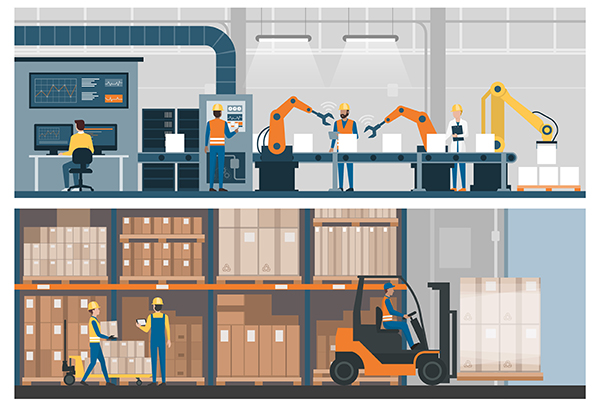I don’t know about you, but I’ve never thought of 3PLs as innovators or early adopters of technology. Given the short-term nature of their contracts, the industry players focused on taking the fat out of processes and being great operators with conventional processes. Based on a few stories I’ve published in the last year or so, I think that’s changing.
In Germany, for instance, Arvato SCM Solutions is utilizing pouch sortation and automated packaging technologies to optimize e-fulfillment and managing returns.
GEODIS is utilizing mobile collaborative robots in its fulfillment operations.
Last fall, DB Schenker announced that it is partnering with IAM Robotics to develop the warehouse of the future, utilizing IAM’s mobile, piece-picking robotic technology.
And, DHL Supply Chain is utilizing mobile collaborative robots and smart glass technology in its fulfillment operations. In fact, a week ago, I had a chance to interview three DHL executives about a $300 million technology investment the 3PL is making to create its next generation supply chain.
According to senior VP Fred Takavitz, VP of corporate IT Carl Behn and VP of IT Americas Mike Kreider, the investments will be spread across 350 North American facilities, and extend beyond robots and smart glasses to also include technologies like predictive analytics, augmented reality, robotic process automation, IoT and DHL’s proprietary end-to-end visibility solution, known as MySupplyChain. It’s part of a global digitalization strategy, the company says. While many of these solutions are in active development, “we see the greatest opportunity in collaborative piece picking robots, artificial intelligence and autonomous vehicles going forward,” said Takavitz, adding that DHL is already seeing “productivity gains upwards of 25% and throughput capacity gains of 30%” from the initial investments DHL is also developing a 24,000 square foot innovation center near Chicago to showcase and develop emerging technologies. The center is scheduled to open in 2019.
So, what’s driving it?
One is “the maturity of the emerging technology marketplace,” noted Behn. “The 25% productivity improvements are coming from the standardization of robotics and artificial intelligence.”
A second is the need to support higher levels of service and the greater complexity associated with filling e-commerce orders with one other unknown: What’s coming next. Think of this: The DHL execs pointed out that in the past year, they filled 50 million orders, comprising 150 million items, or an average of 3 items an order. That’s a lot of picking. And as to higher levels of service, “four day service is now a two-day expectation which will soon become next day or same day,” Takavitz said. DHL is already doing same day service in 5 U.S. cities today.
A third is the war for talent. “Our vision for the future is focused on associates,” Behn said. “From recruiting to onboarding to flexible work schedules, digital technologies are going to enhance associate engagement. We believe that will drive higher retention rates and create the most productive workforce in the market.”
The last thing I asked the three was about innovation. Given that 3PLs have traditional stuck to the tried and true, what does it take to become an early adopter of emerging technologies? Mike Kreider noted that DHL has made innovation a core part of its culture, with events like an annual hackathon, where teams pick a technology to develop that they think can make a difference. “We take individuals who are passionate about an innovative technology and then leverage that, sometimes starting with a local market,” he said. “It takes focus, and you have to be disciplined around what you want to accomplish, and then make sure that your processes will allow you to accomplish it.”
About the Author
Follow Robotics 24/7 on Linkedin
About the Author
Follow Robotics 24/7 on Linkedin
Article topics
Email Sign Up
















